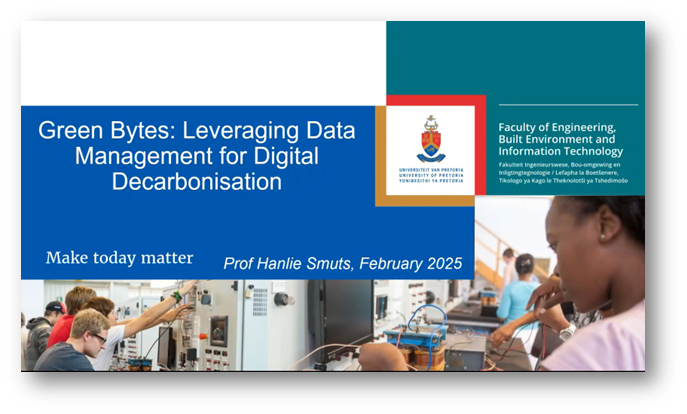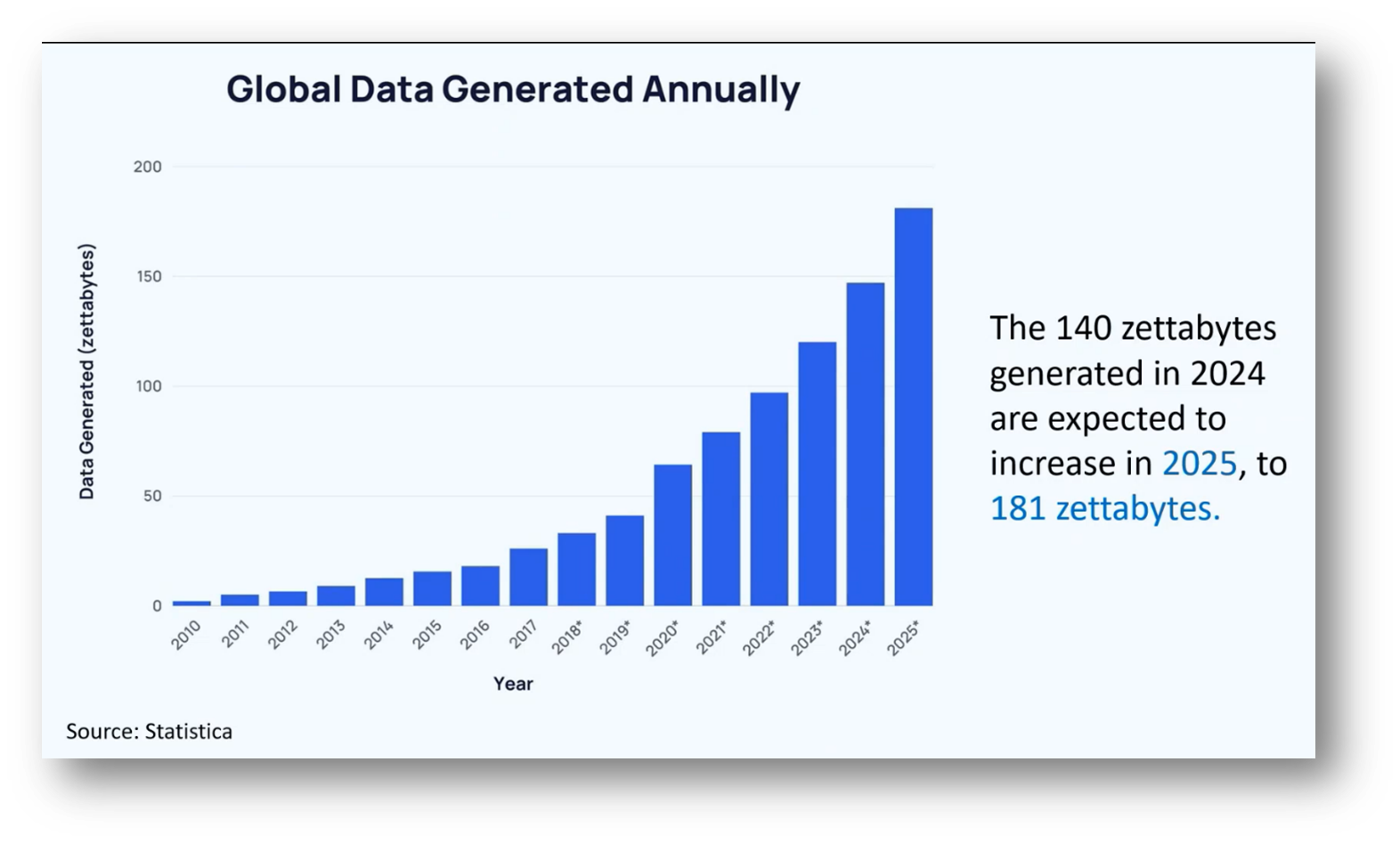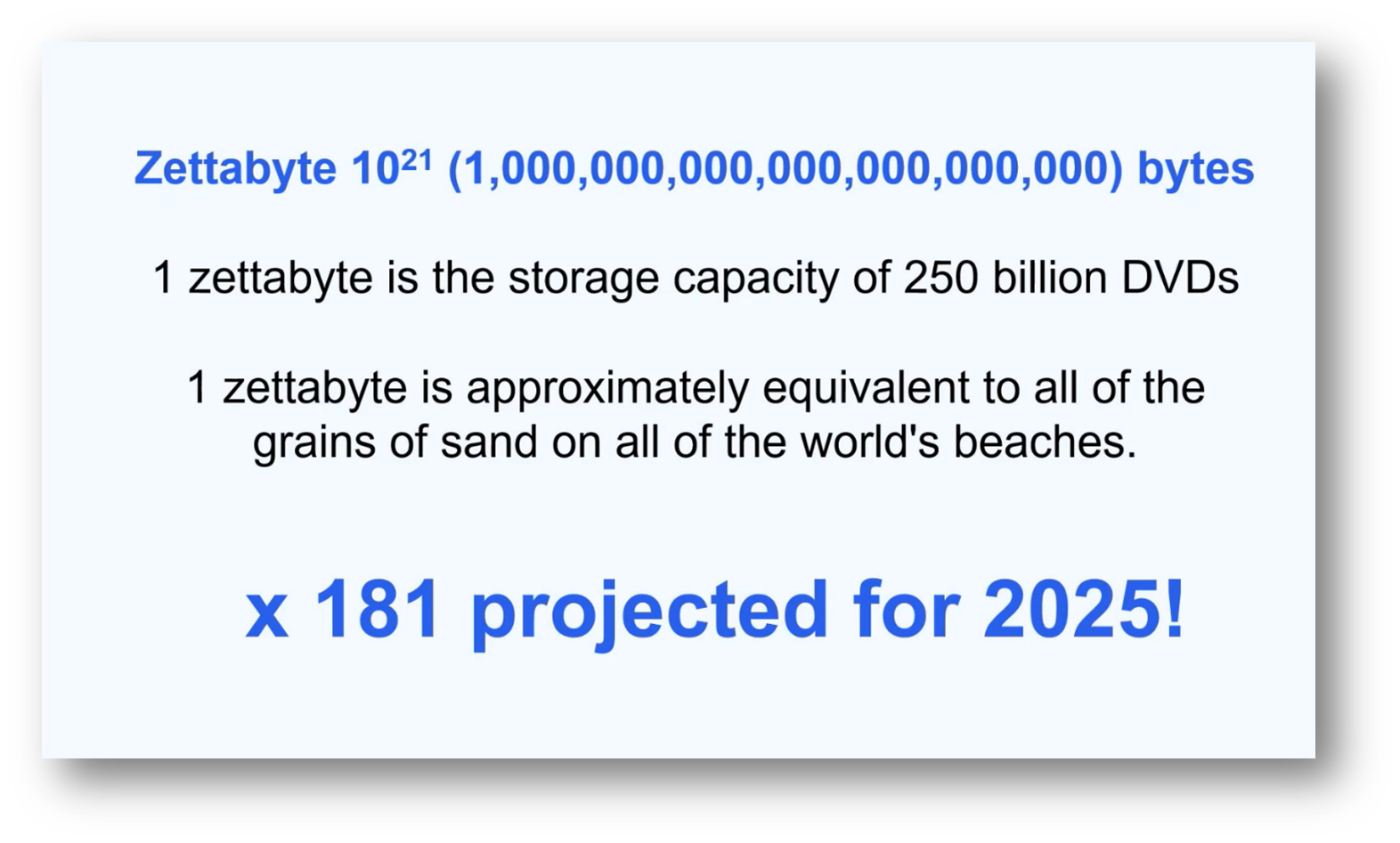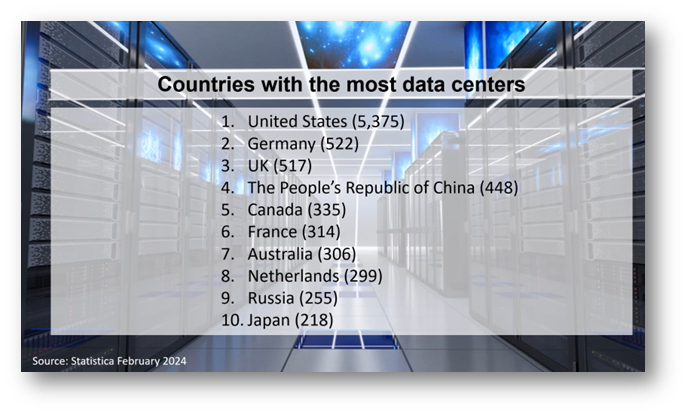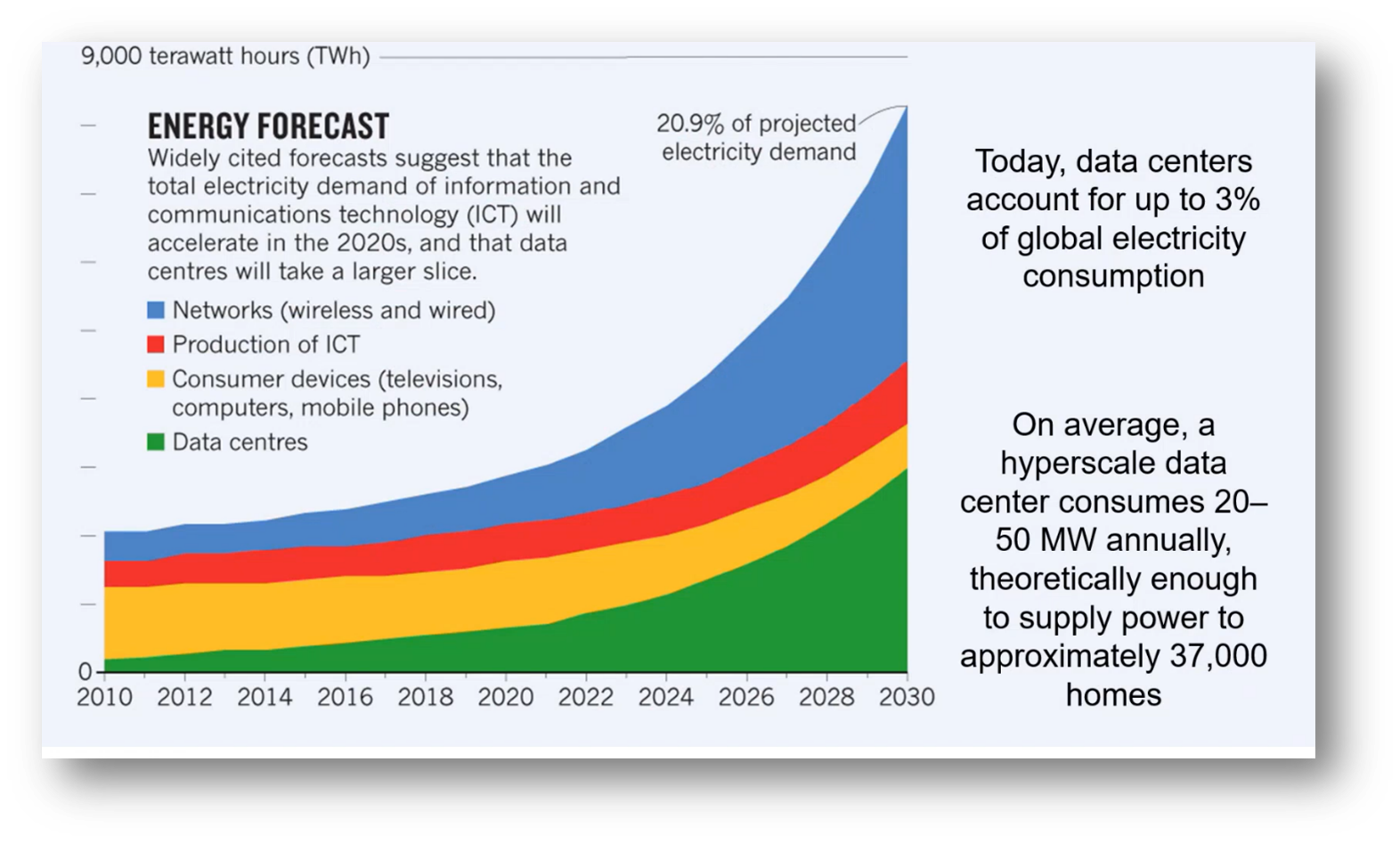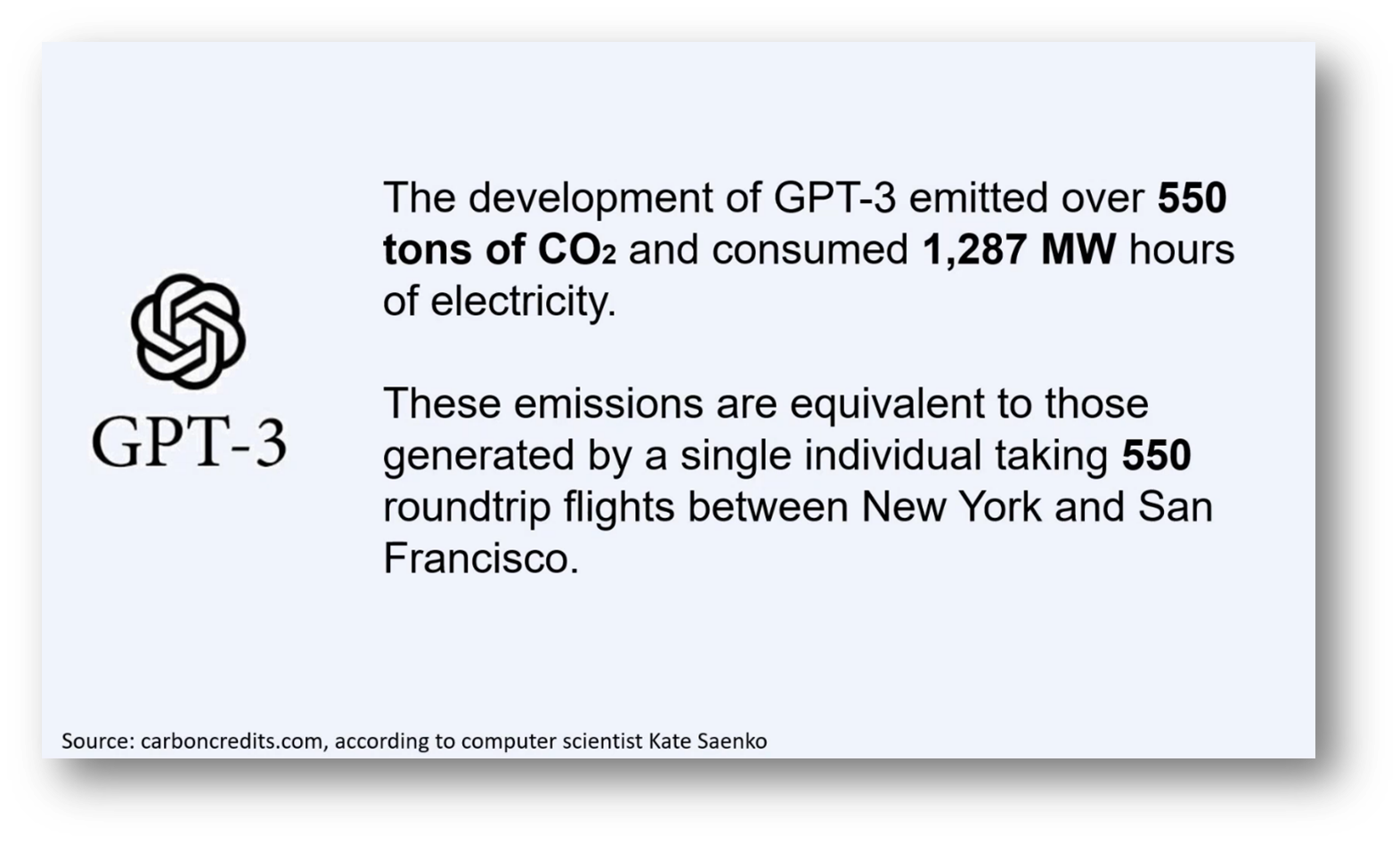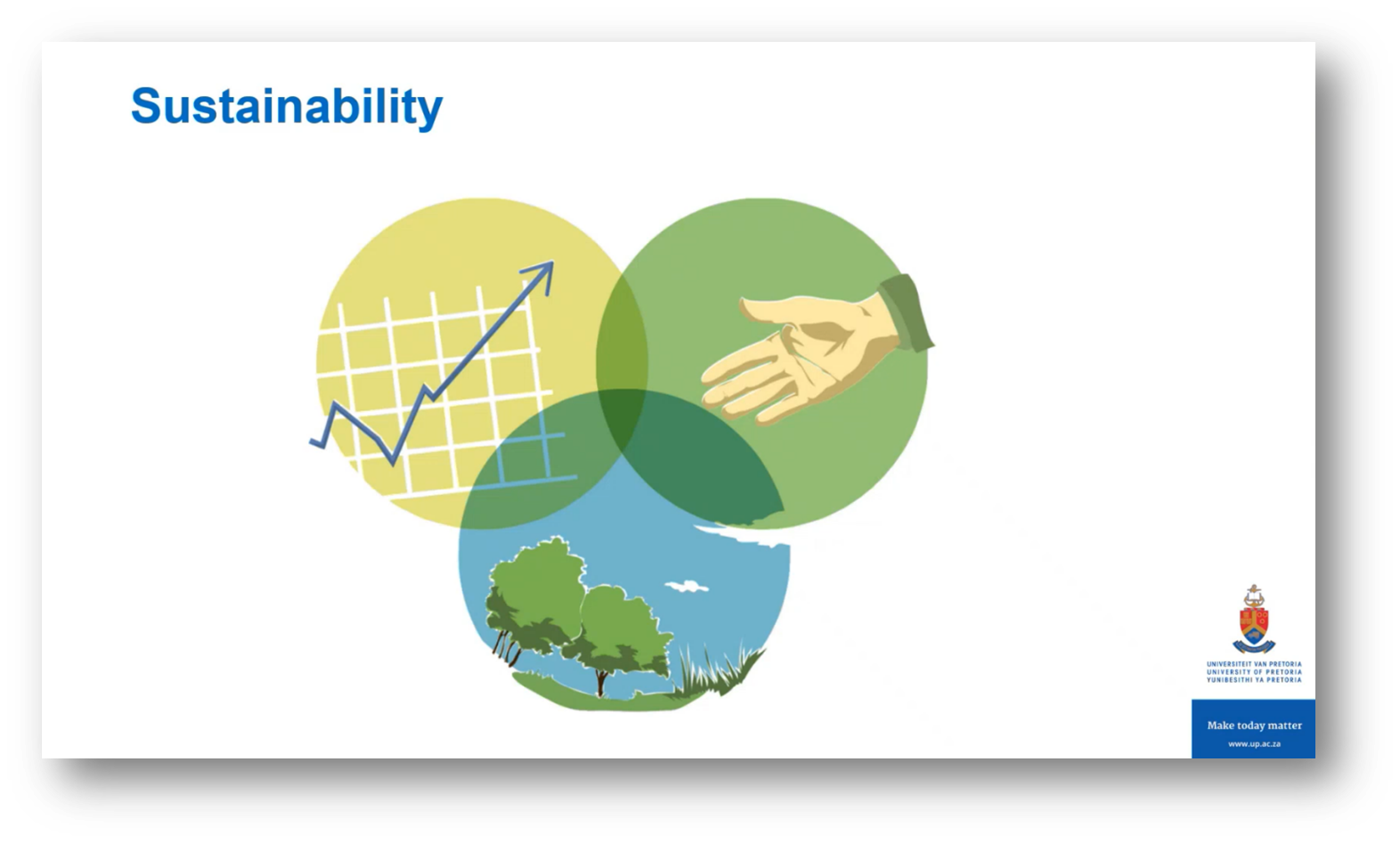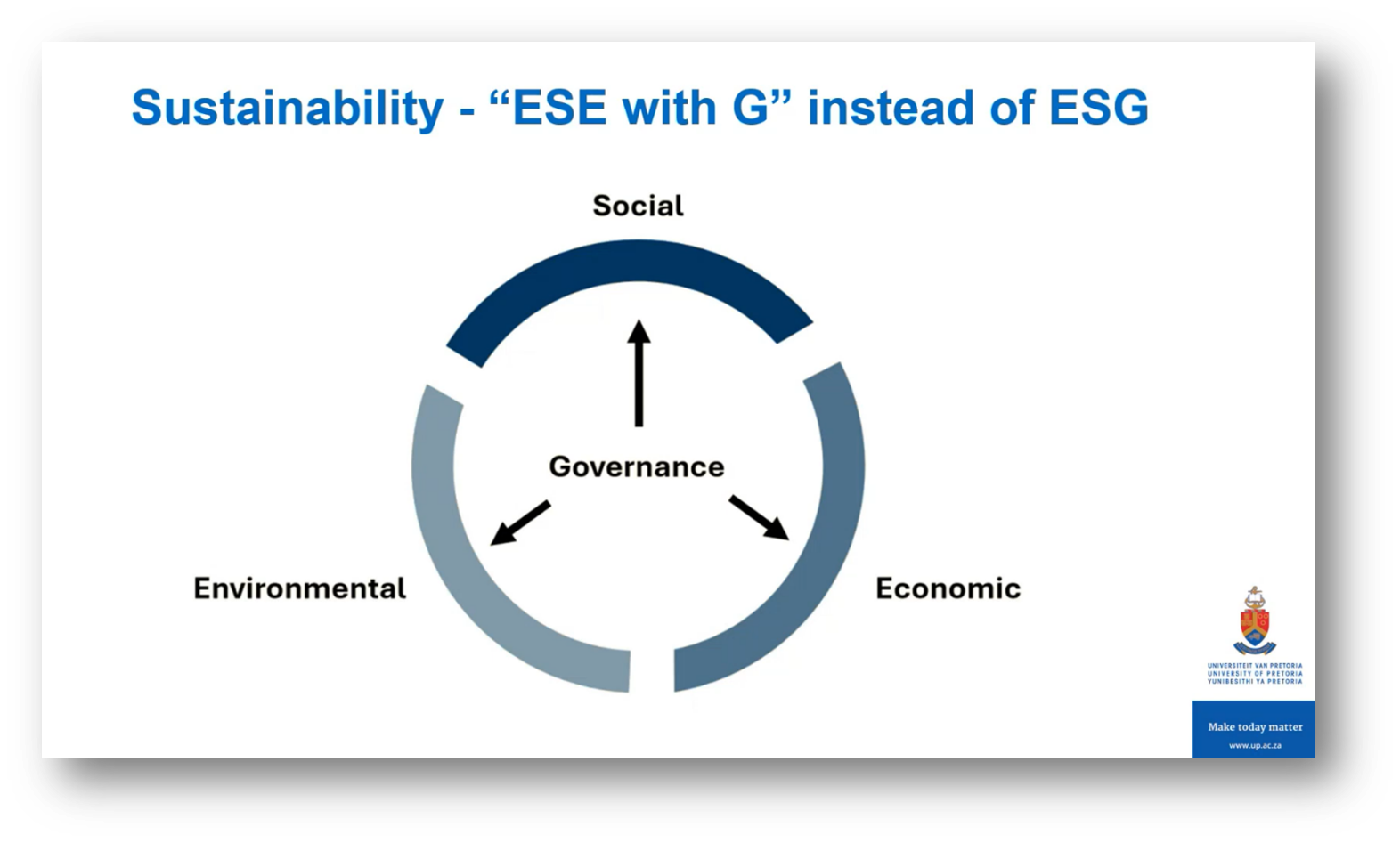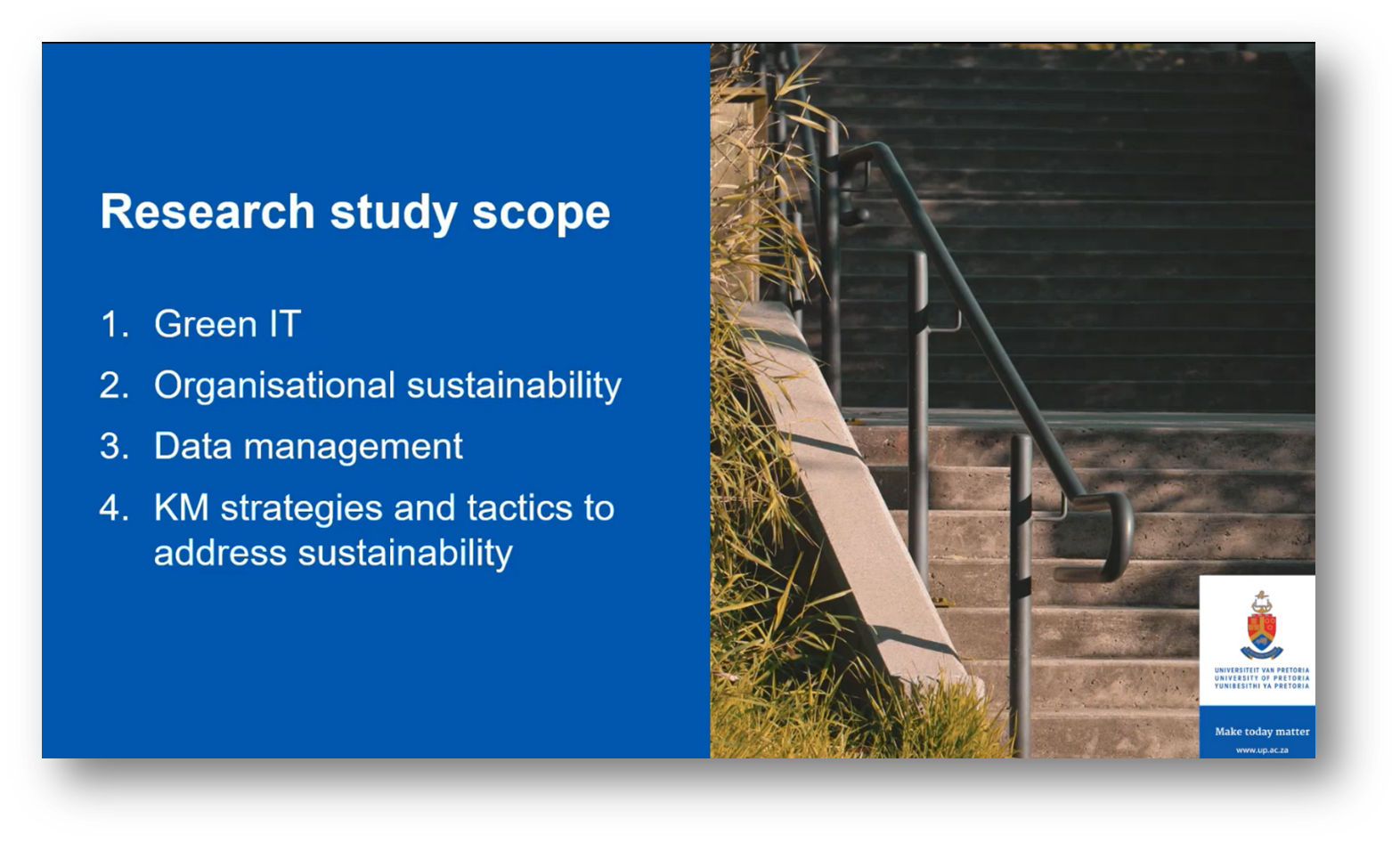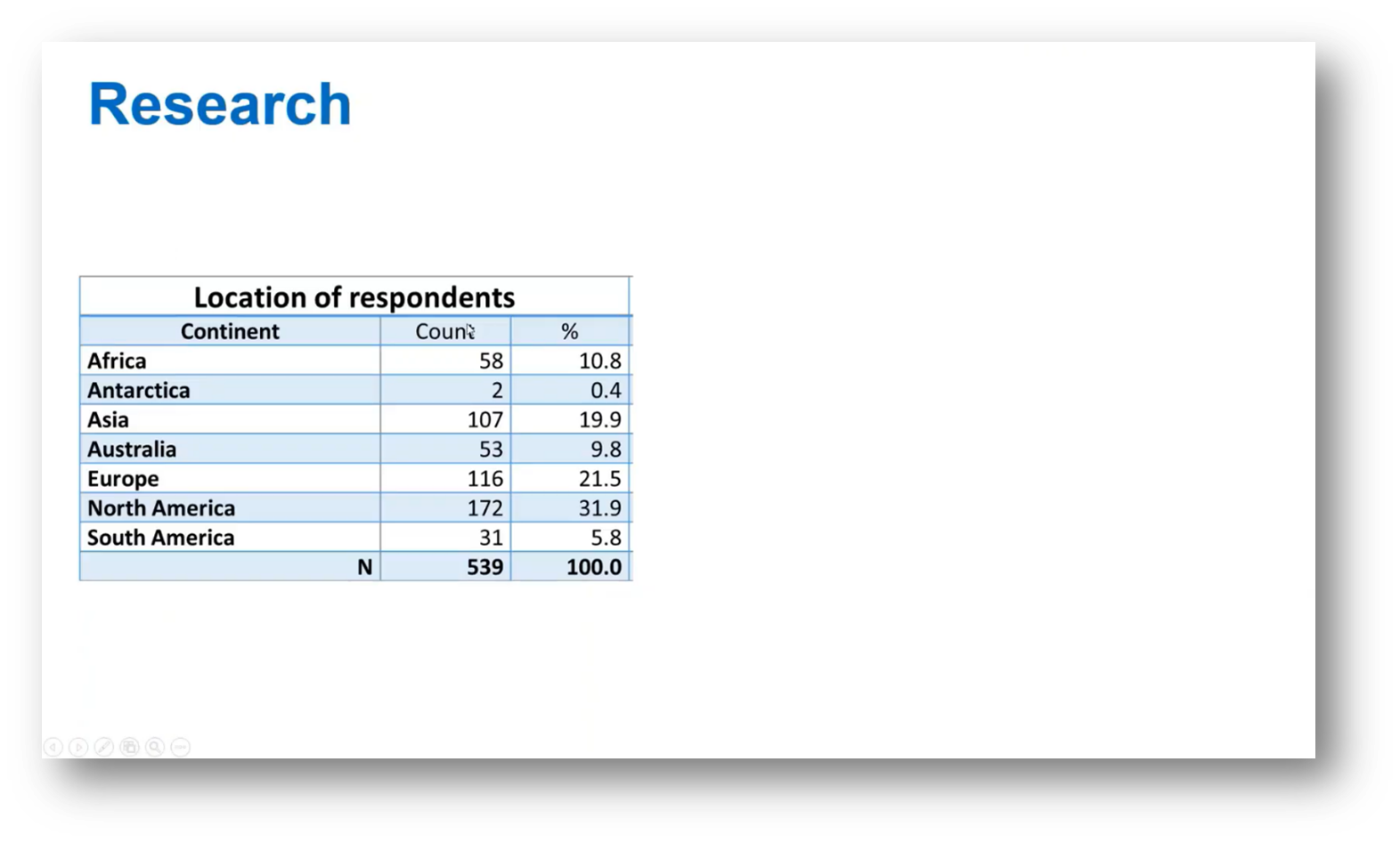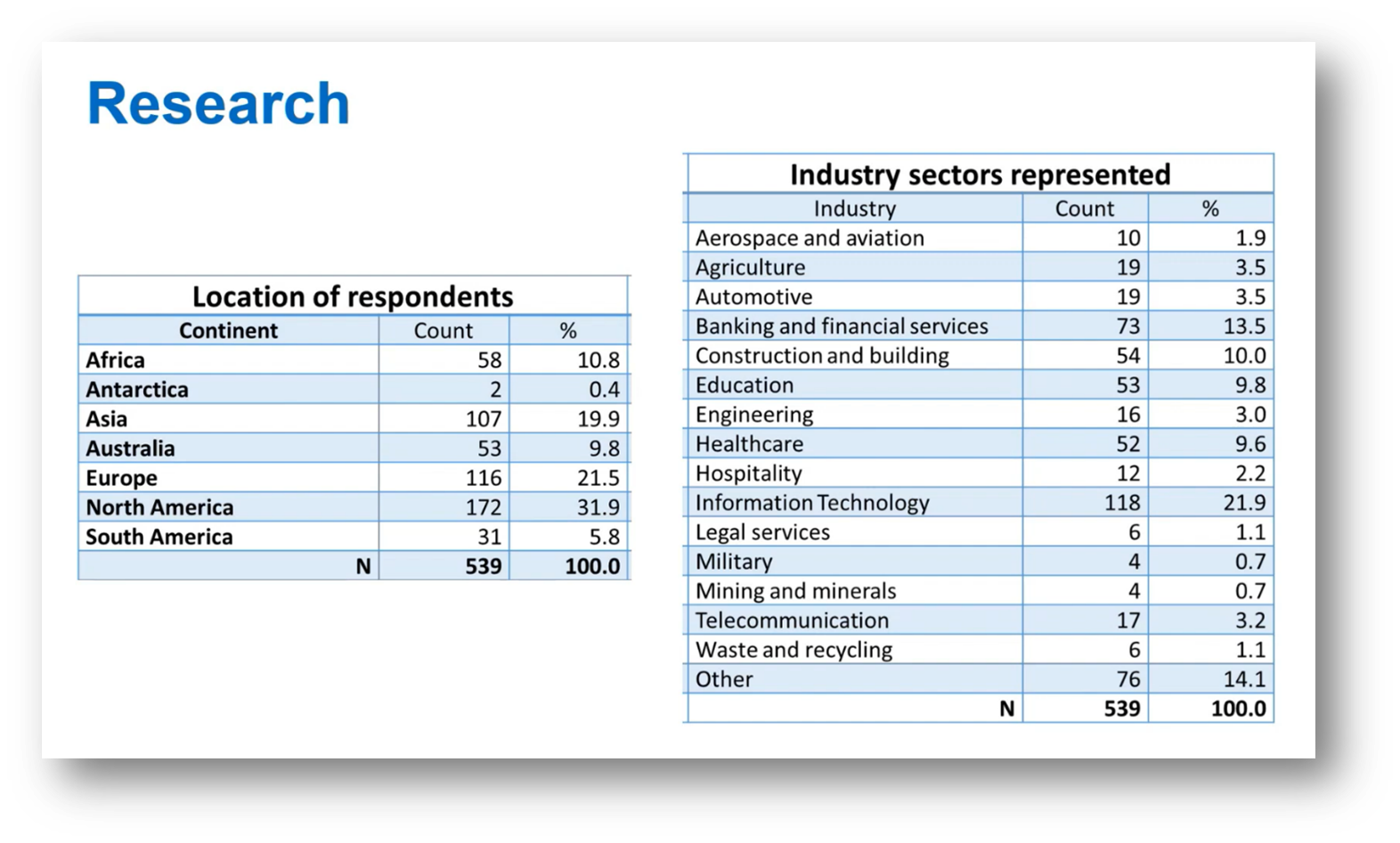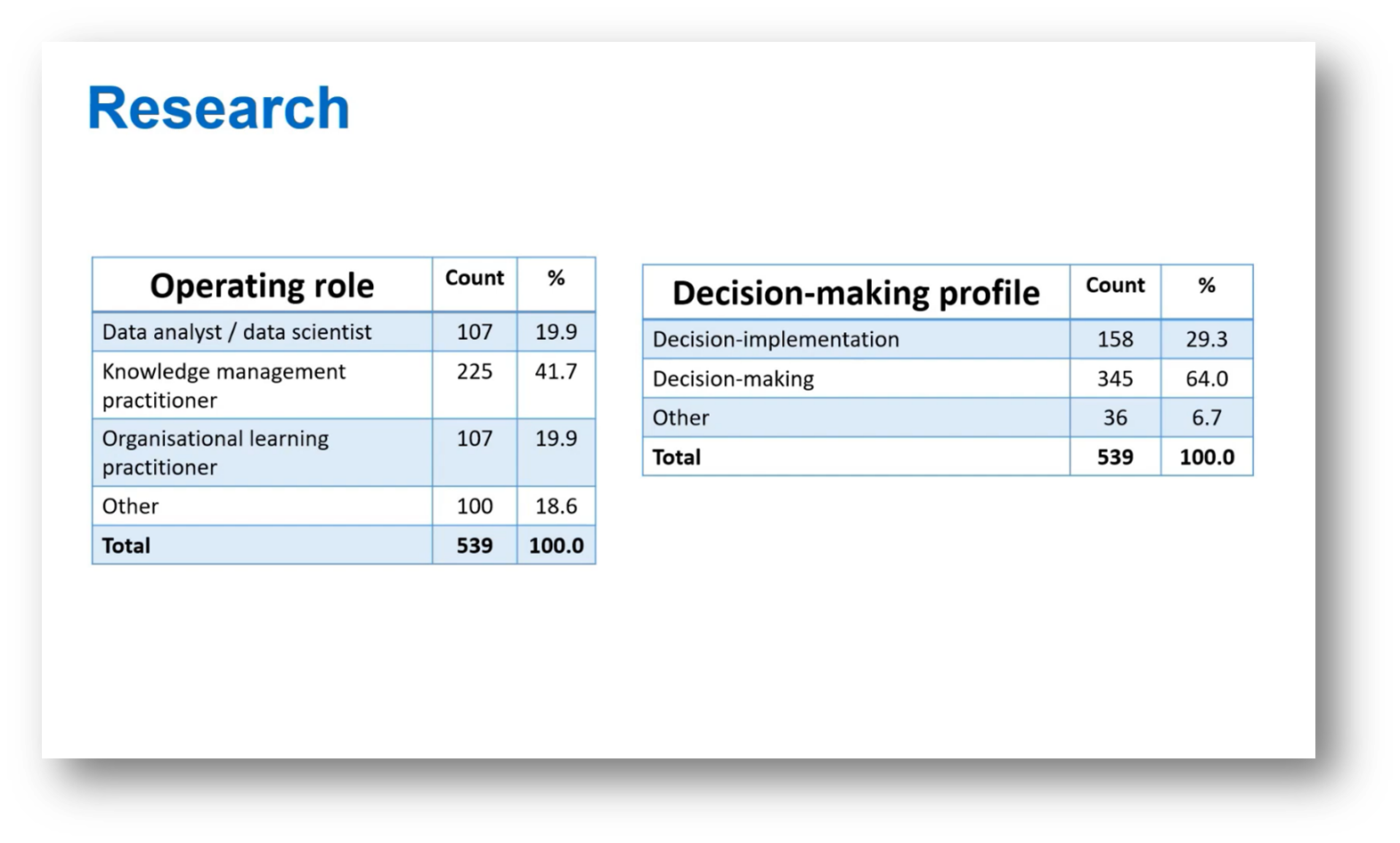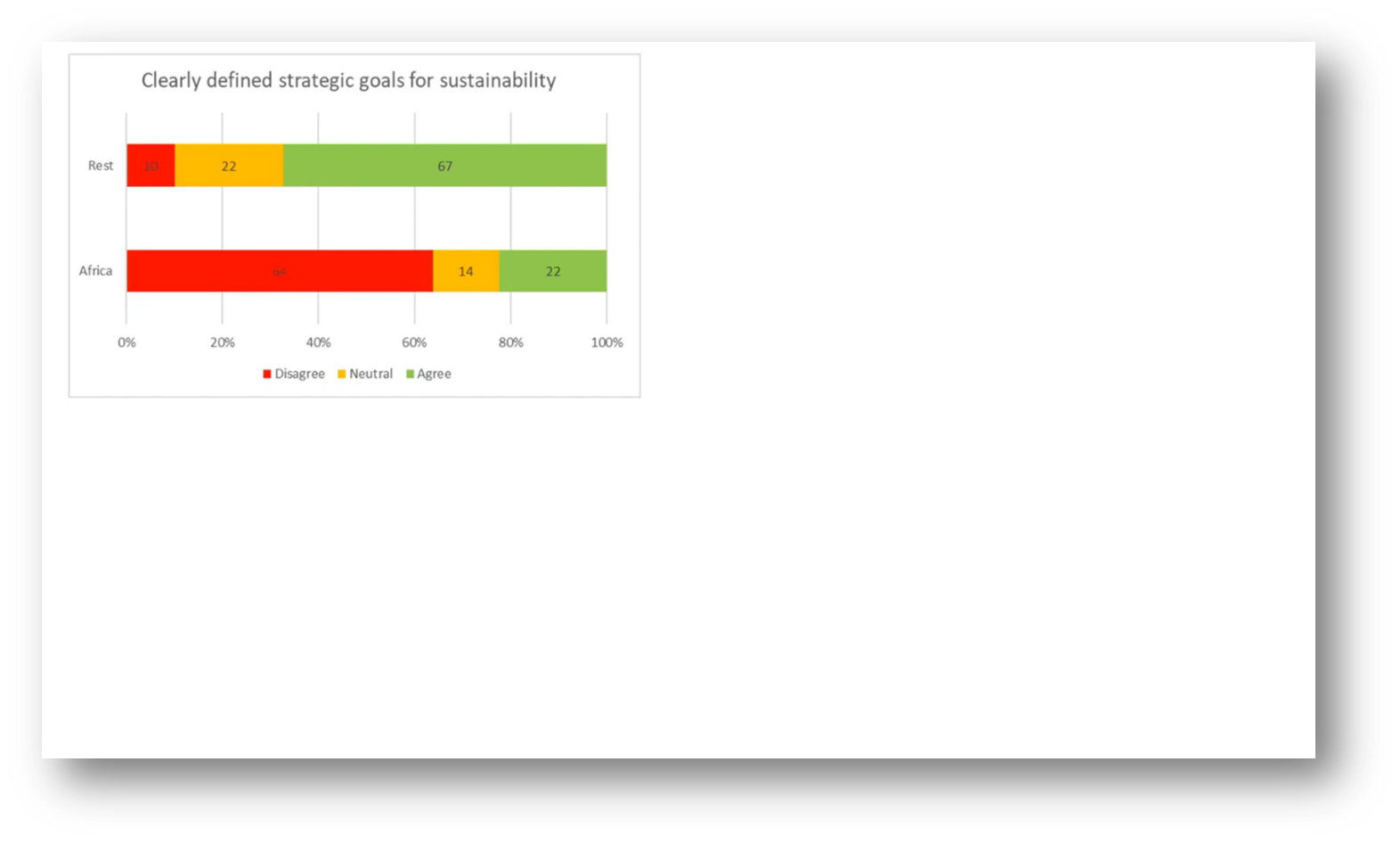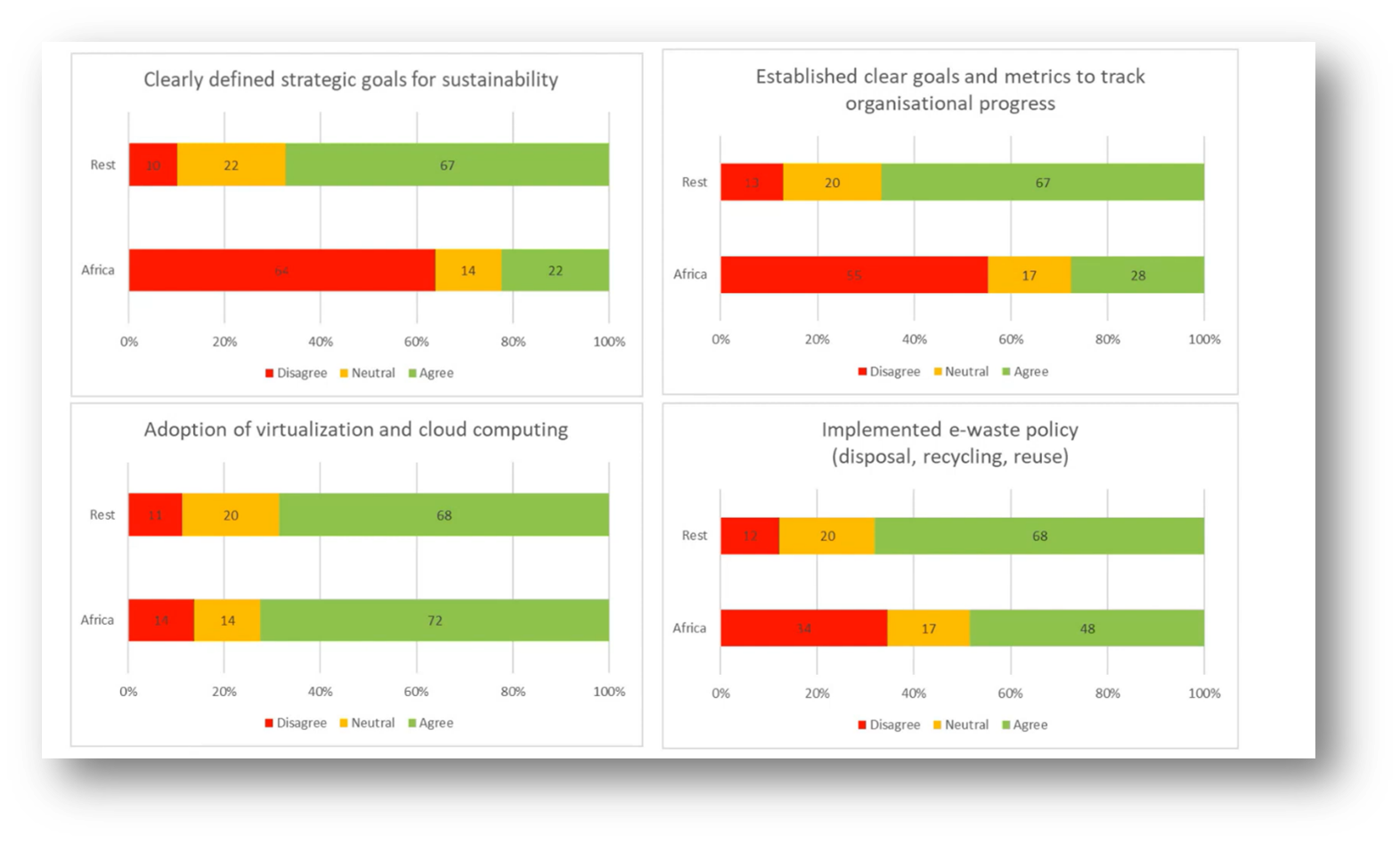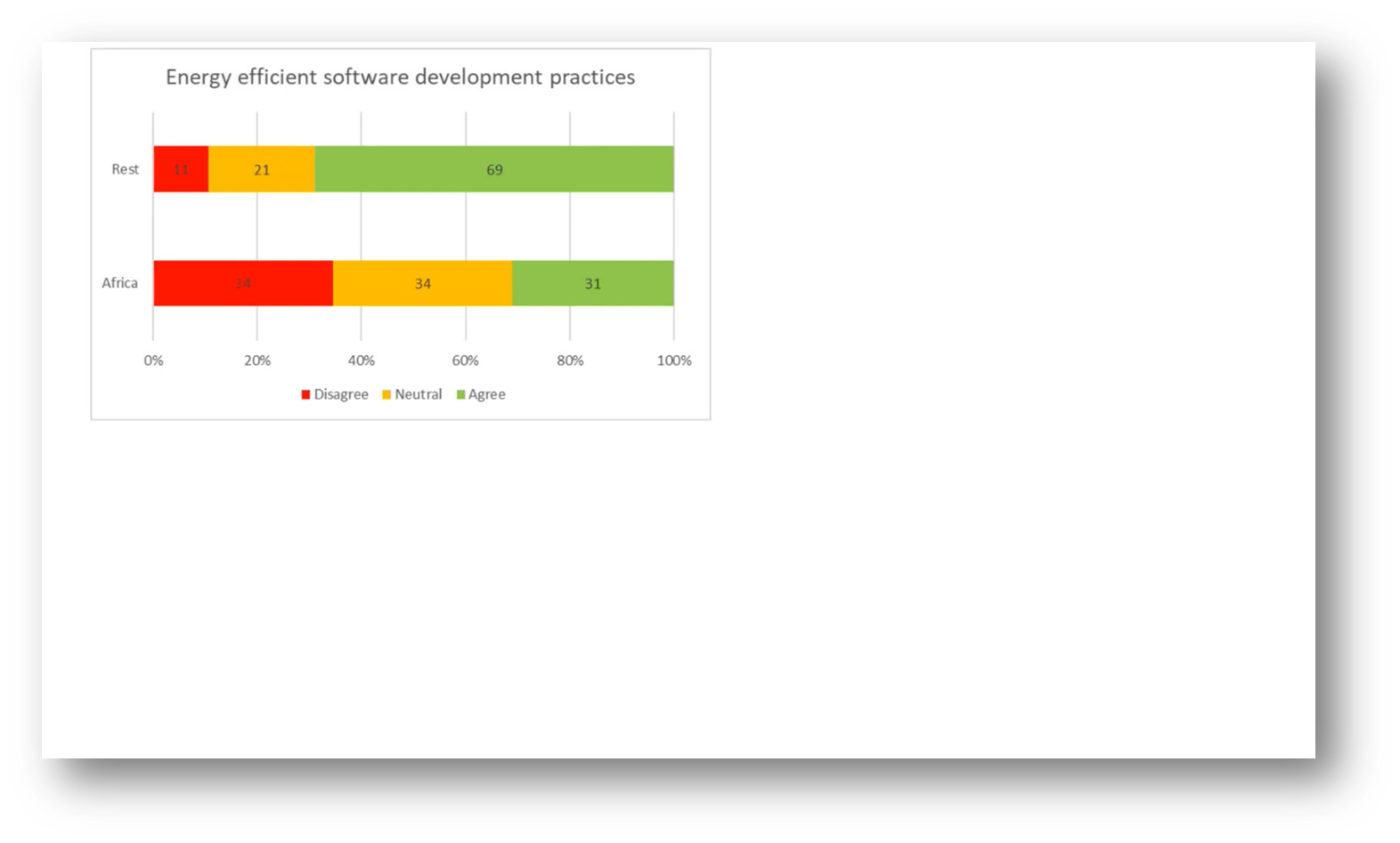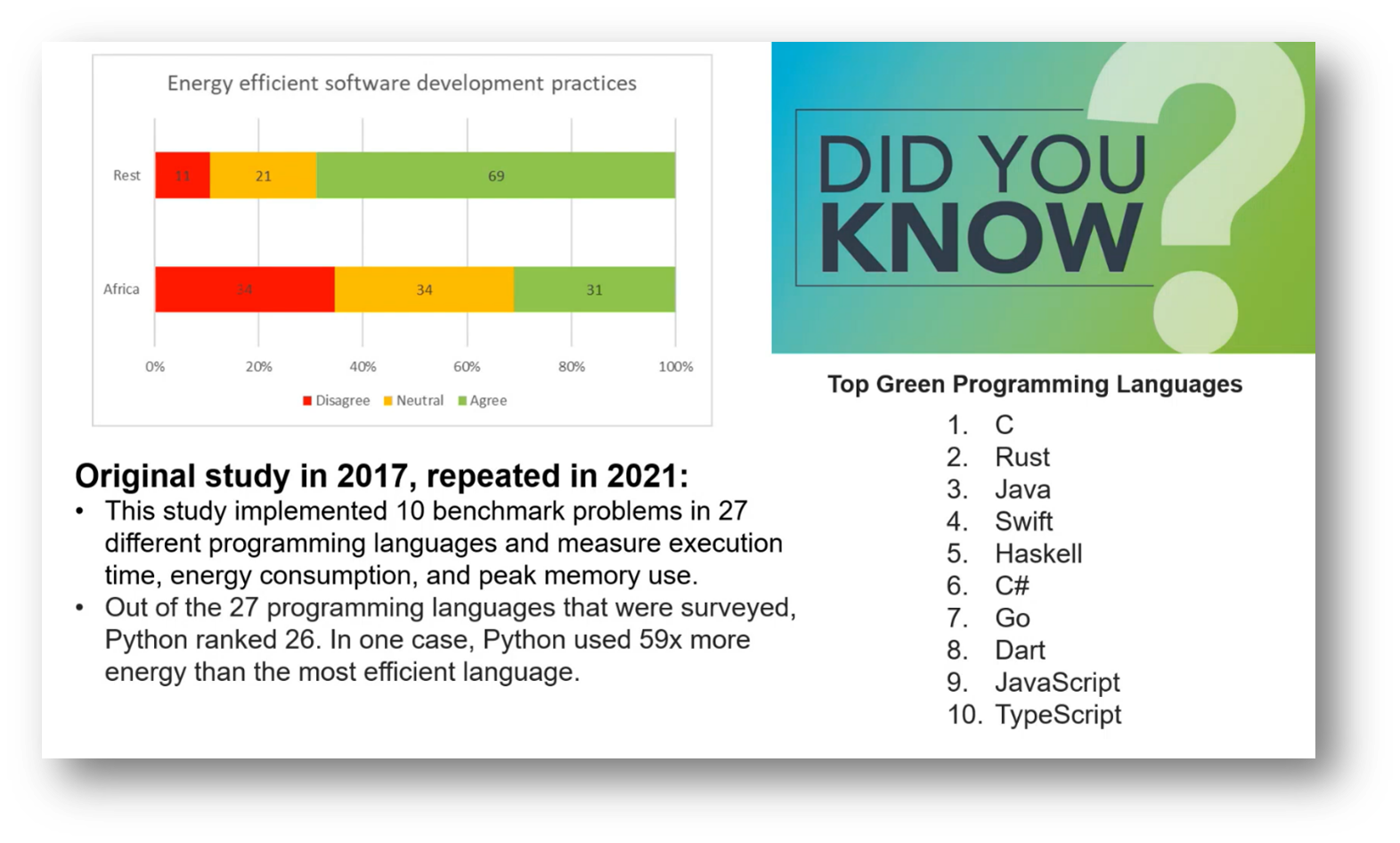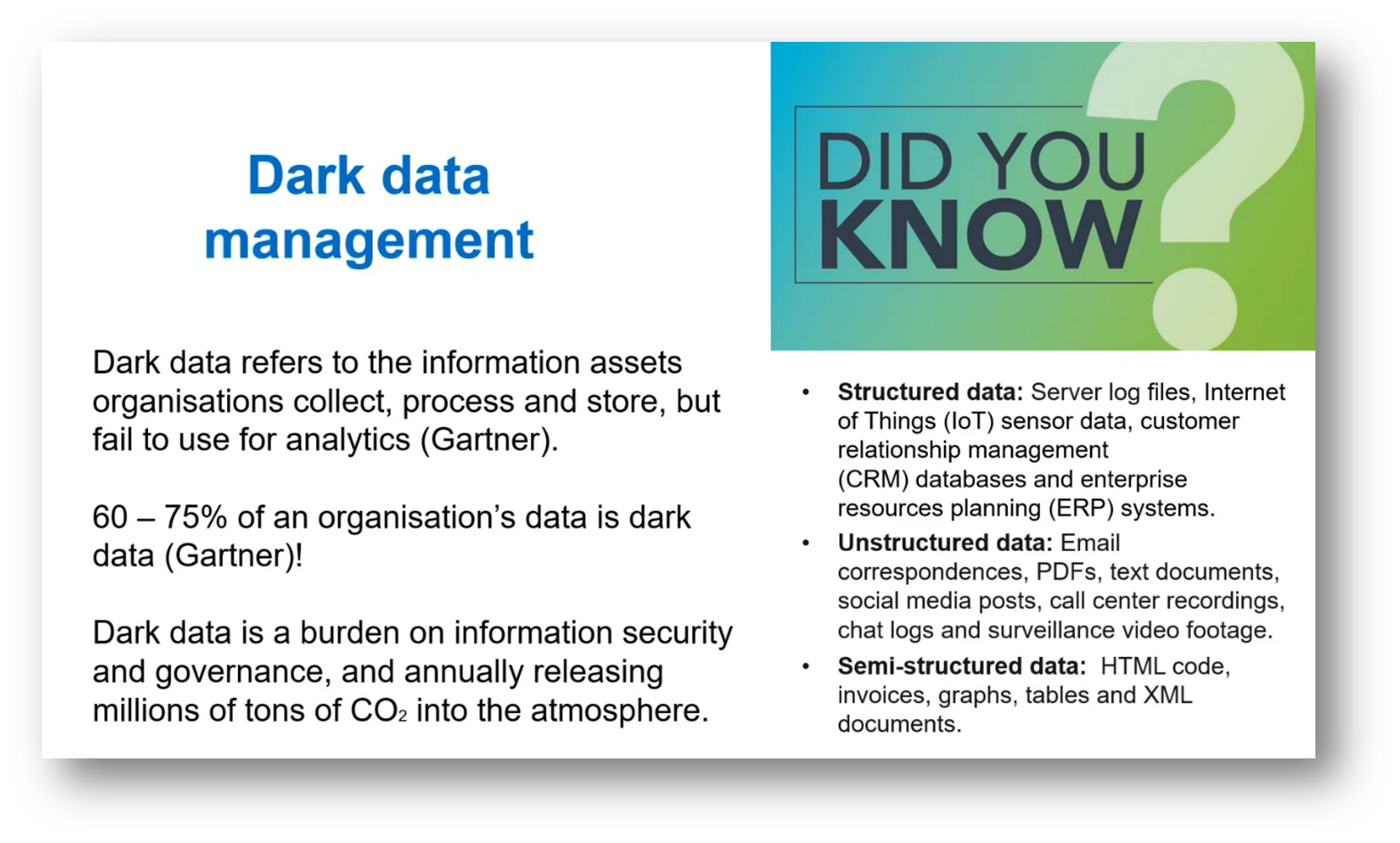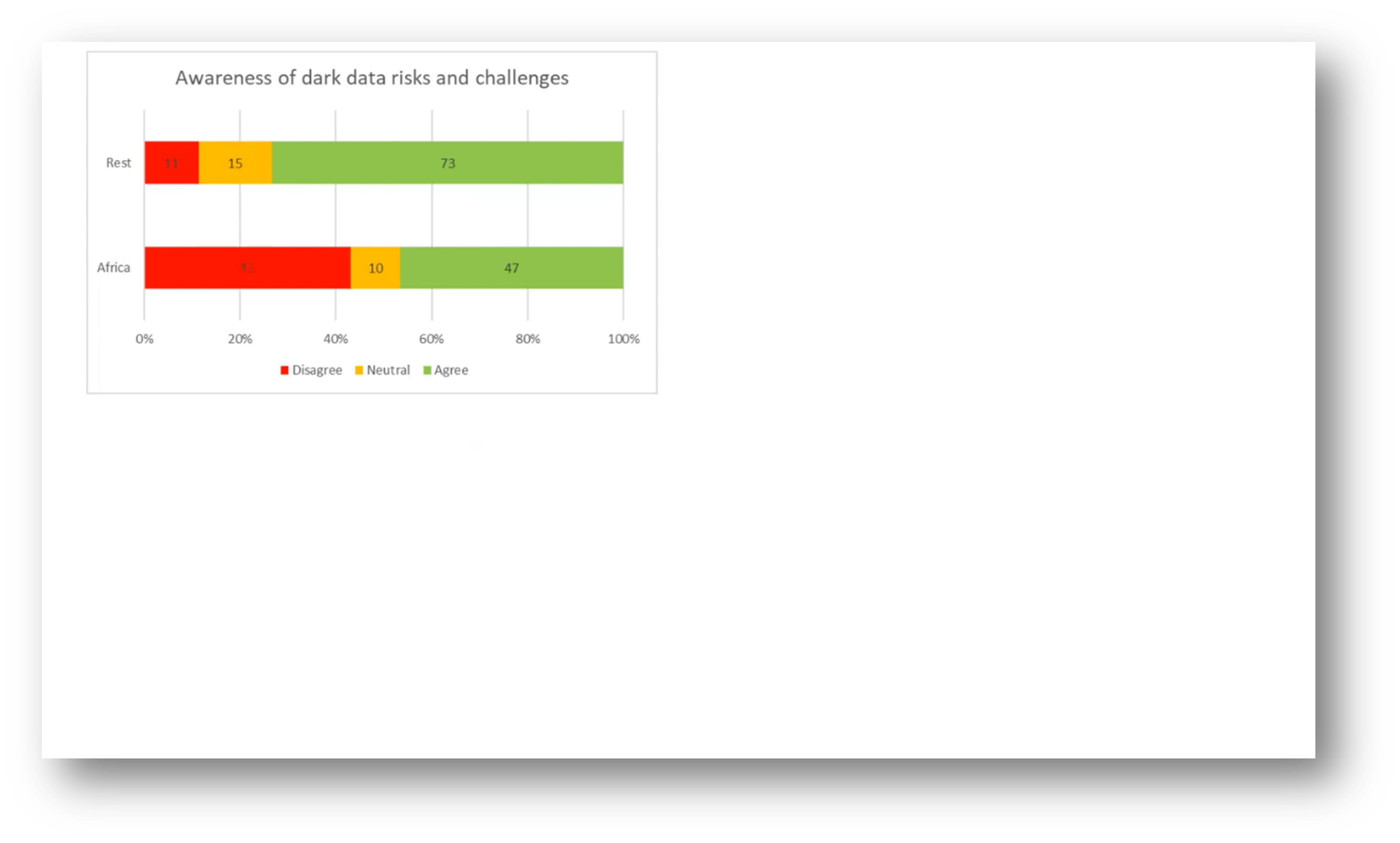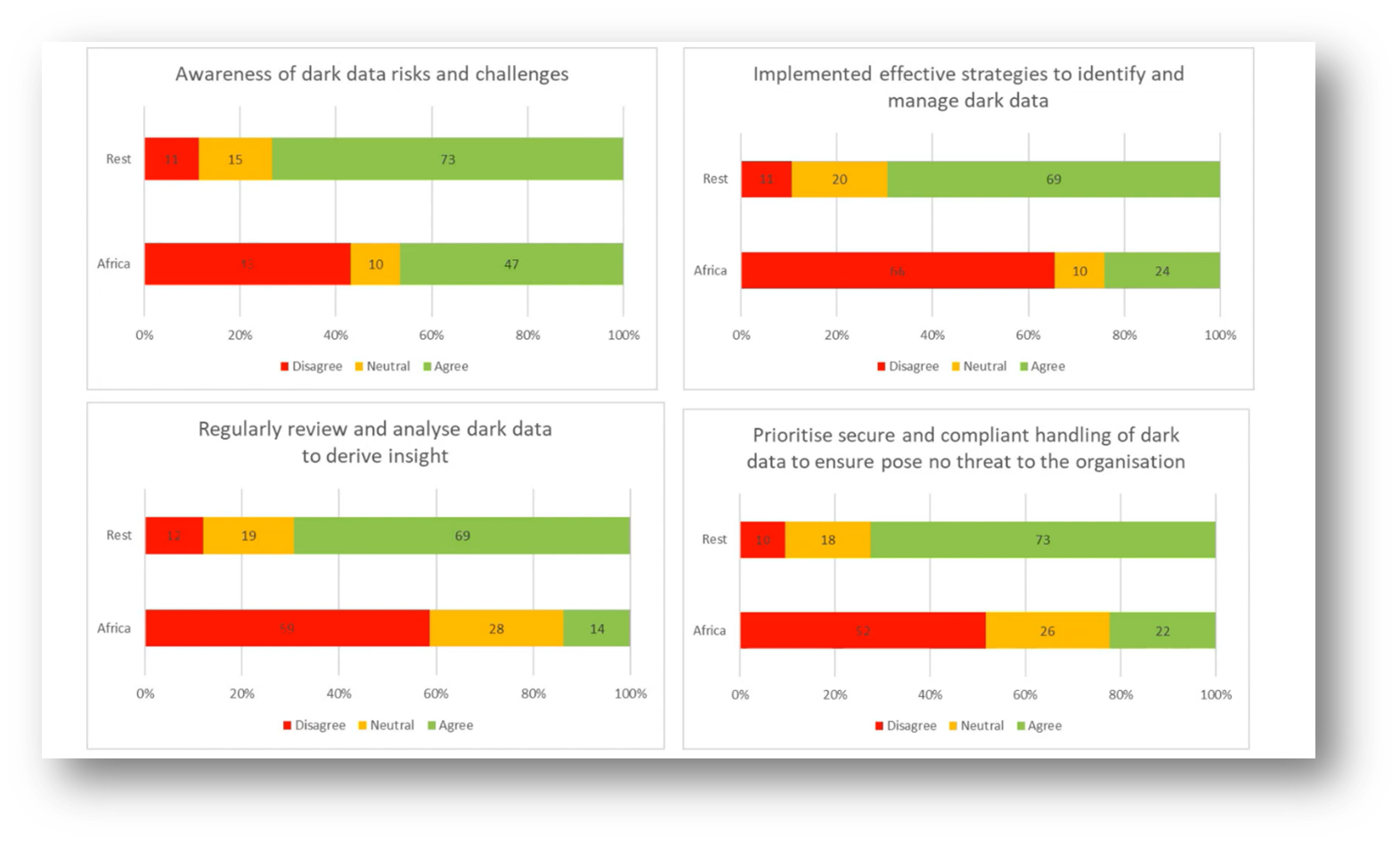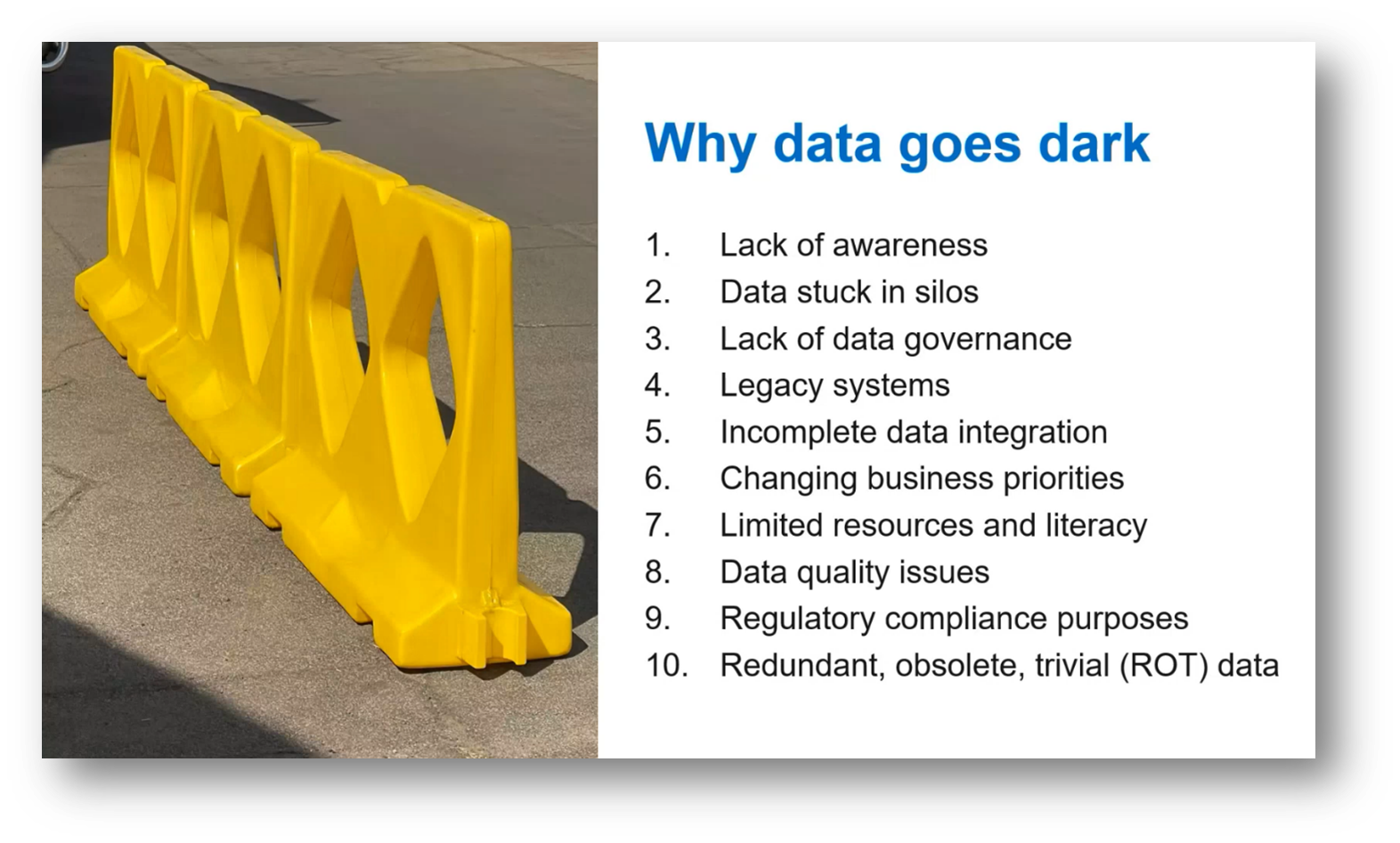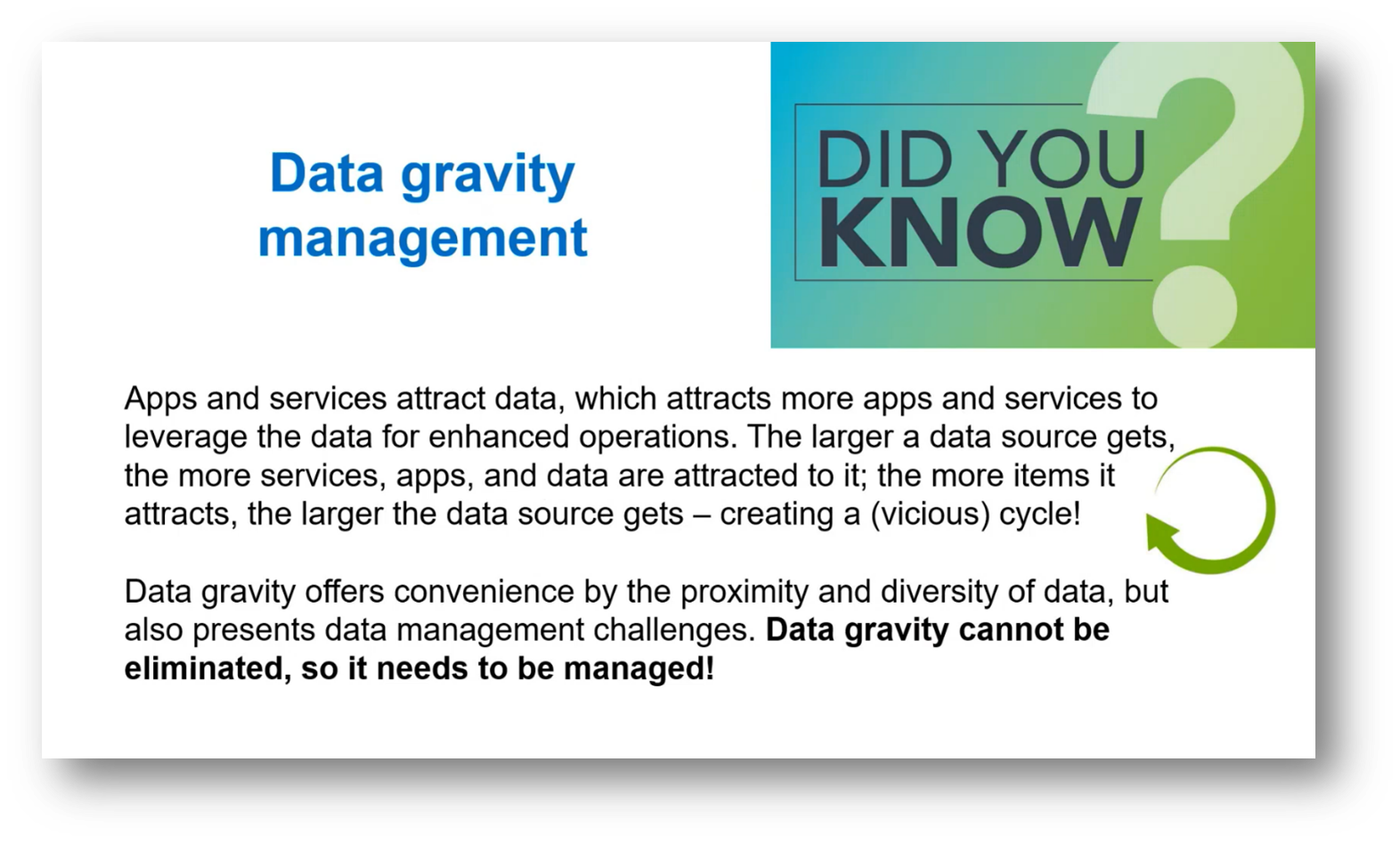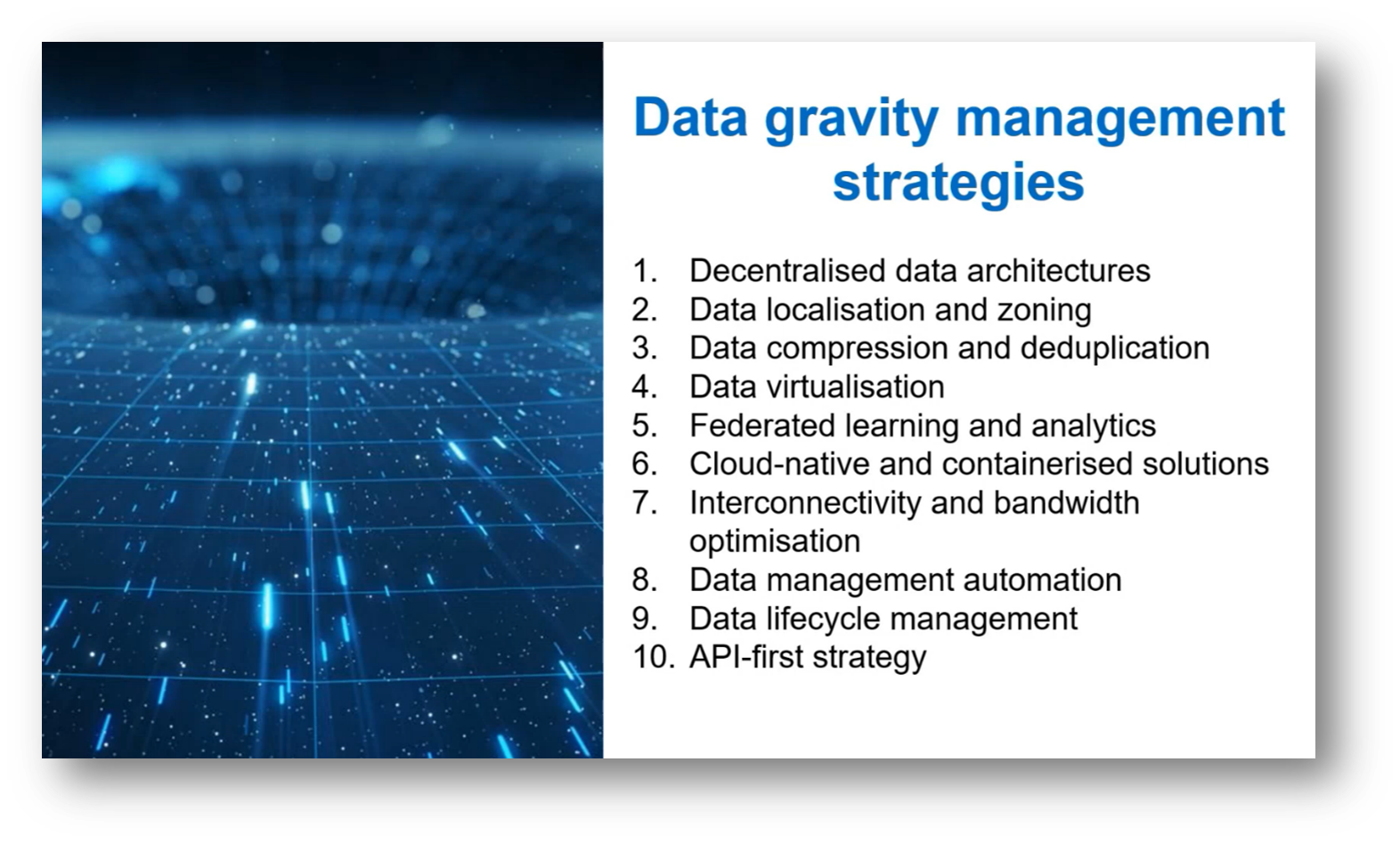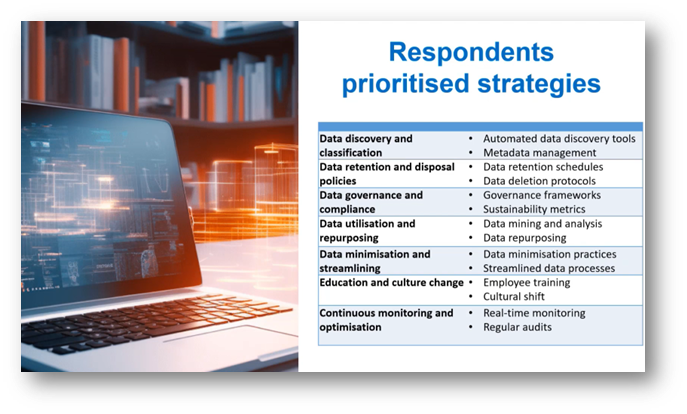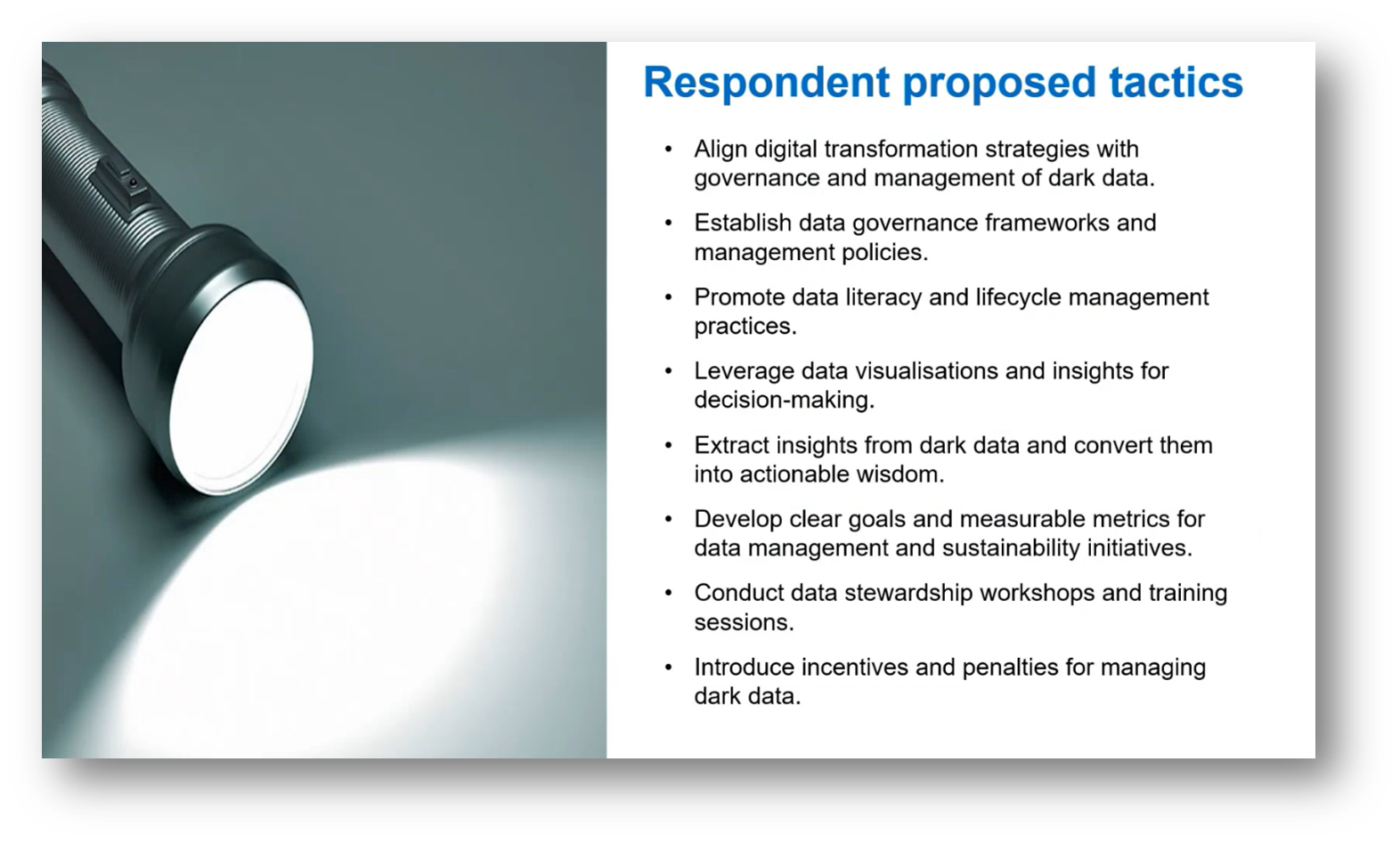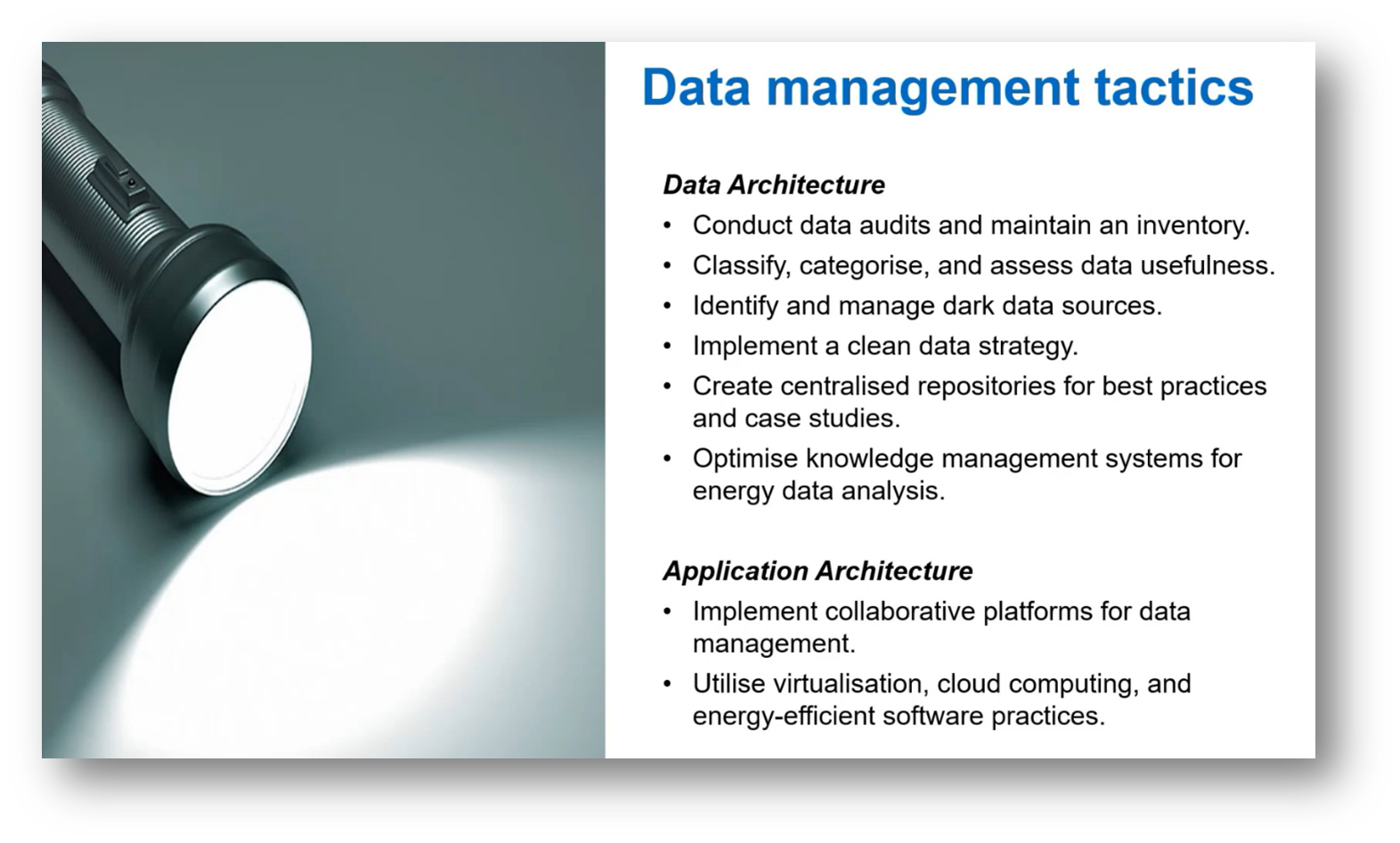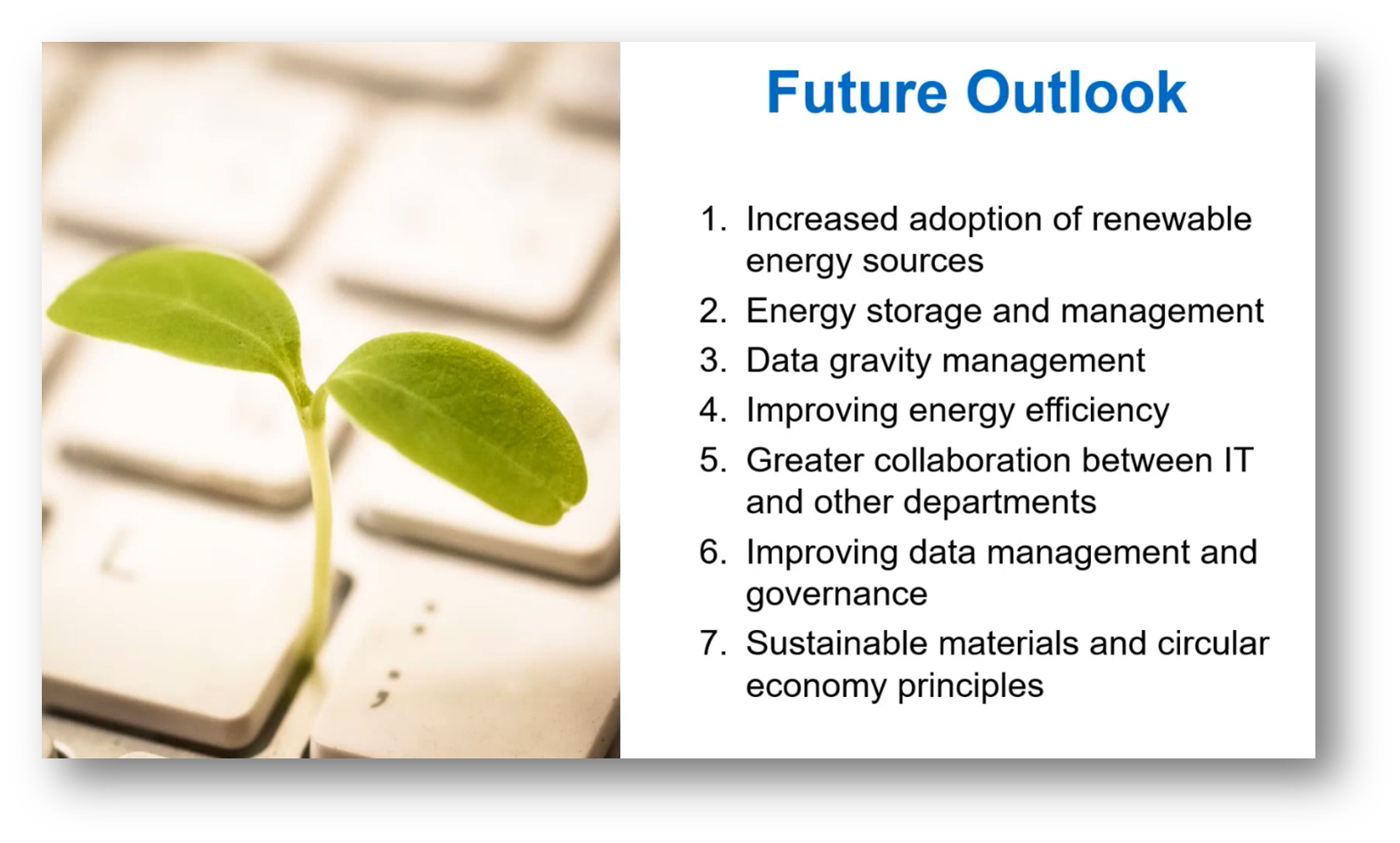Green Bytes: Leveraging Data Management for Digital Decarbonisation With Dr. Hanlie Smuts
Executive Summary
This webinar highlights the critical intersection of digital decarbonization and sustainability. Dr. Hanlie Smuts emphasises the vital role of effective data management in reducing carbon emissions associated with data centers. She explores the impact of energy consumption and green information technology within organizations, while addressing the concept of sustainability in an organizational context. Key topics include the relationship between knowledge management and data, insights from a global survey, and the strategic goals for adopting cloud computing in Africa.
Dr. Hanlie Smuts advocates for implementing e-waste policies and circular economy principles, promotes energy-efficient software development practices, and examines the challenges posed by dark data. The webinar underscores the necessity for a comprehensive data management strategy, awareness creation, proactive approaches to managing data gravity, and tailored strategies for the telecommunication industry, culminating in a discussion on business case building and the distinctions between data gravity and critical data for future outlooks.
Webinar Details
Title: Green Bytes: Leveraging Data Management for Digital Decarbonisation With Dr Hanlie Smuts
Date: 19 February 2025
Presenter: Dr. Hanlie Smuts
Meetup Group: DAMA SA User Group Meeting
Write-up Author: Howard Diesel
Contents
Digital Decarbonization and Sustainability
The Importance of Data Management
Impact of Data Centers
Data Centers, Sustainability and Carbon Emissions
The Impact of Energy Consumption and Green Information Technology
Understanding the Concept of Sustainability in An Organisational Context
Knowledge Management and its Relationship with Data
Analysing Data from a Global Survey
Strategic Goals for Sustainability and Adoption of Cloud Computing in Africa
Implementing E-Waste Policies and Circular Economy Principles
Energy Efficient Software Development Practices
Dark Data in Organisations
Awareness of Dark Data Across Different Countries
The Need for a Comprehensive Data Management Strategy
Creating Awareness in Data Management
Proactive Strategies for Managing Data Gravity
Data Management and the Telecommunication Industry
Data Management Strategies
Strategies for Improving Data Management and a Future Outlook
Business Case Building and the Difference Between Data Gravity and Critical Data
Digital Decarbonization and Sustainability
Professor Hanlie Smuts opens the webinar and highlights the importance of community engagement and mutual learning. She shares that she is an associate professor in the Department of Informatics at the University of Pretoria since 2017, brings a wealth of experience in technology, research, and knowledge management, focusing on business transformation and performance improvements.
With a background in computer science, Hanlie is passionate about sustainability and data management, and has worked extensively in East and West Africa, including time spent in Tanzania. She advocates for advancing women in business and fostering young leaders, emphasizing the value of sharing knowledge and collaboration in our field..
Hanlie shares that her presentation is structured into two main components: first, it provides background on digital decarbonization. She highlights research conducted in the UK that focuses on quantifying CO2 emissions from data sets through a tool known as the digital carbon ladder. This component emphasizes the importance of sustainability and the role data professionals can play in addressing carbon emission concerns.
The second part shares findings from a global research study that collected valuable input from participants. Hanlie aims to initiate a discussion around the data collected, inviting thoughts and reflections from attendees, and remains open to analyzing specific scenarios as needed.
Figure 1 Introduction Slide
Figure 2 The Importance of Sustainability
The Importance of Data Management
Presently, humanity is generating an immense amount of data daily, with a projection of 181 zettabytes by 2025, which is roughly equivalent to all the grains of sand on the world's beaches. This data explosion is crucial for organisations seeking actionable insights, as effective data management is essential for designing new business models, optimising existing ones, and creating predictive models tailored to individual consumers. Despite the vast quantity of data produced, its application is vital for driving business innovation and decision-making.
Figure 3 Global Data Generated Annually
Figure 4 "181 zettabytes of data produced projected for 2025”
Impact of Data Centers
Data centres play a vital role in the global economy by storing and processing large volumes of data generated by various businesses, yet they are significant consumers of energy, contributing to carbon emissions and raising sustainability concerns related to the Sustainable Development Goals (SDGs).
Hanlie highlights the complexities of data ownership, exemplified by a case involving pacemaker data, where the producing organisation asserted their ownership over the data generated from their device. Understanding the nuances of data access and ownership is essential as industries navigate the implications of their data practices.
Figure 5 “Countries with the Most Data Centers”
Figure 6 Measuring Impact
Data Centers, Sustainability and Carbon Emissions
Data centers are projected to see a significant increase in electricity demand of 20.9% by 2030, contributing to approximately 3% of global electricity consumption. This rising energy requirement is driven by the processing power needed for advanced analytics and data management. When compared to other industries, such as aviation, which consumes less electricity, data centers demonstrate a much higher energy usage. This emphasizes the critical need to address the environmental impact of data centers, particularly concerning their carbon emissions, as their electricity demand continues to grow.
Figure 7 Energy Forecast
Figure 8 Share of Global CO2 Emission Generated by Sector/Category
The Impact of Energy Consumption and Green Information Technology
A statistic presented by Kate Saenko highlights that the development of GPT-3 emitted over 550 tons of CO2, equivalent to someone taking 550 trips between New York and San Francisco. At a conference, Tom Jackson and Ian Hodgkinson from Loughborough University discussed a critical issue they termed "data doomsday." Their calculations indicated that by 2026, the energy consumption of data centers would surpass the renewable energy produced, predicting that, if current trends continue, power for these centers could be exhausted by 2033. Hanlie notes that this underscores the urgent need for improved data management and energy strategies, as the intersection of hardware, software, and energy efficiency is essential for sustainable technology development.
Figure 9 Emissions Generated by the Development of GPT-3
Figure 10 "The Data Doomsday"
Figure 11 "Data*"
Understanding the Concept of Sustainability in An Organisational Context
The concept of sustainability, in the context of the Organisation, encompasses three main aspects: economic, social, and environmental sustainability. Economic sustainability is essential for businesses to generate profit and create shareholder value while also prioritizing customer care. Social sustainability focuses on placing humans—employees and citizens—at the center of technological advancements, particularly in varying contexts like Eastern and West Africa compared to developed countries. This ties into sustainable development goals, such as food security and environmental responsibility.
Environmental sustainability, along with social and governance (ESG) metrics, further emphasises the need for organisations to report on their sustainability progress, which is increasingly becoming legislated in areas like South Africa. The comprehensive model that integrates economic, environmental, and social governance (ESE with G) serves as a framework for understanding sustainability. The research on this topic involved exploring areas such as green information technology, organisational sustainability, data management, and knowledge management strategies, with data gathered through a structured questionnaire.
Figure 12 Sustainability
Figure 13 Sustainability - "ESE with G" instead of ESG
Figure 14 Research Study Scope
Knowledge Management and its Relationship with Data
Knowledge management is a practice that relies heavily on data, as evidenced by the knowledge pyramid, where data forms the foundational layer. By transforming data into information through context and subsequently collating various sources of information, we can convert it into knowledge, which enables the extraction of actionable insights. This connection highlights the importance of data in both the theory and application of knowledge management.
Figure 15 Research Findings
Analysing Data from a Global Survey
In a recent survey Hanlie conducted, 606 respondents participated, though some started the questionnaire but did not complete it. The distribution of responses varied significantly by continent: Africa represented a certain percentage, Asia accounted for 19%, Europe 21%, North America 31%, and South America nearly 6%. A clear distinction in the data was observed between these continents, although a comprehensive presentation of the results could not be conducted due to time constraints.
The initial analysis focused on comparing Africa to the rest of the world, with further data available by continent. It revealed notable differences between data management practices in Europe and Africa, highlighting varying levels of maturity. A significant portion of respondents identified as working in the construction and building industry, which surprised the author given their background in information technology.
Among the participants, a substantial number operated in roles related to organizational learning, data analysis, and knowledge management, despite differing job titles. Moreover, when asked about their roles as decision makers or executors, 64% identified as decision makers, indicating their involvement in strategic data-driven initiatives and evidence-based decision making. This suggests that their diverse backgrounds and roles influenced their perspectives on the questionnaire's topics.
Figure 16 'Location of Respondents' and 'Industry Sectors Represented'
Figure 17 'Operating Role' and 'Decision-making Profile'
Figure 18 Clearly Defined Strategic Goals for Sustainability
Strategic Goals for Sustainability and Adoption of Cloud Computing in Africa
The analysis revealed significant differences in perceptions regarding sustainability goals between respondents from Africa and those from other continents. While 64% of African respondents indicated a lack of clearly defined strategic goals for sustainability, only 10% of respondents from other continents shared this view. Additionally, 55% of African participants reported not measuring or tracking organisational progress, compared to 13% from other regions. Interestingly, 72% of African respondents reported adopting virtualisation and cloud computing, slightly higher than the 68% adoption rate among respondents from other continents. Overall, these findings highlight the challenges and advancements in sustainability practices within Africa compared to a broader global context.
Figure 19 'Established Clear Goals and Metrics to Track Organisational Progress,' 'Adoption of Visualisation and Cloud Computing' and 'Implemented e-Waste Policy'
Implementing E-Waste Policies and Circular Economy Principles
Hanlie addresses the implementation of e-waste policies within the framework of circular economy principles, focusing on the disposal, recycling, and reuse of digital assets. While there were predominantly positive perspectives regarding these efforts across various continents. Hanlie observes that Africa has a varied outlook, suggesting that there is a need for enhancement.
A question was raised about the disparity between decision makers and executors in the context of the responses collected, suggesting that the executors' perspective may lack awareness of existing goals and metrics. This highlighted issues of communication regarding objectives in Africa. Hanlie proposed to further analyse these viewpoints and share insights through network diagrams and data analysis, emphasising the importance of effectively conveying this information.
Figure 20 Energy Efficient Software Development Practises
Energy Efficient Software Development Practices
The importance of energy-efficient software development practices can be noted in the significant disparity between responses from African and non-African respondents regarding proactive implementation of these practices. According to Hanlie, 69% of non-African respondents affirm their commitment. Research from 2017 introduced benchmarks for evaluating programming languages based on metrics such as energy consumption, memory use, and execution time, assessing 27 languages. The findings ranked C, Java, C#, JavaScript, and others as the most energy-efficient, while Python was identified as consuming 59 times more energy than the most efficient language. Updated research in 2021 reinforces the need to consider greener software tools in development practices.
Figure 21 Original Study in 2017
Figure 22 Dark Data Management (Data Rot)
Dark Data in Organisations
Dark data, as defined by Gartner, refers to information assets within organisations that are collected but never utilised for analytics, with estimates suggesting that 60 to 80% of an organisation’s data may fall into this category. This phenomenon is evident in personal data collections, such as having thousands of similar photographs on a phone that are seldom accessed. Dark data, which includes logs and various forms of structured and unstructured data, contributes to sustainability concerns and carbon emissions due to the resources required for data storage and management.
Some organisations are unaware that they can eliminate unused data, such as logs, particularly in less regulated environments, while others in banking or insurance may be required to retain data for compliance. The relationship between dark data and concepts like ROT (redundant, obsolete, and trivial data) highlights the significance of identifying and managing unnecessary data effectively.
Figure 23 Awareness of Dark Data Risks and Challenges
Awareness of Dark Data Across Different Countries
Hanlie refers to global awareness and management of dark data among respondents in her survey, revealing notable regional discrepancies. While 73% of respondents outside Africa acknowledged awareness of dark data, only 47% of African participants reported similar knowledge, with roughly half recognising the issue. Furthermore, 69% of respondents from outside Africa indicated they implement effective strategies to identify and manage dark data, whereas Africa showed less active management. Regarding cybersecurity concerns, 73% of European respondents affirmed they prioritise security in handling dark data, in stark contrast to 52% of African respondents who admitted they do not prioritise security measures.
Figure 24 'Implemented Effective Strategies to Identify and Manage Dark Data,' 'Regularly Review and Analyse Dark Data to Derive Insight' and 'Prioritise Secure and Compliant Handling of Dark Data to Ensure Pose No Threat to the Organisation'
Figure 25 Why Data Goes Dark
The Need for a Comprehensive Data Management Strategy
The feedback from 539 respondents highlights key issues in data management, revealing a lack of awareness among employees about existing strategies at the executive level, leading to persistent data silos and insufficient data governance. Surprisingly, despite established roles like chief data officers aimed at enhancing data management practices, data governance remains one of the top concerns.
Hanlie shares that respondents noted challenges with legacy systems and incomplete data integration, which hinder effective analysis. Changing business priorities, limited resources, and regional disparities in data literacy further complicate the landscape, coupled with ongoing data quality issues stemming from inadequate data validation at the source. Lastly, Hanlie emphasises the need to address redundant, obsolete, and trivial data as part of a comprehensive data management strategy.
Figure 26 Data Gravity Management
Creating Awareness in Data Management
Creating awareness in data management is a top priority. Three of the attendees express enthusiasm for promoting data awareness training through webinars and educational initiatives. Hanlie stresses the importance of frontline employees understanding data management tactics and strategies to foster a more informed workforce. Additionally, the audience acknowledges the critical role change managers play in supporting these initiatives, alongside a call to action for educators to engage with students about potential career paths in this domain. Despite technical difficulties faced by some participants, the overall sentiment is one of excitement and the need for a collective effort to increase awareness.
Proactive Strategies for Managing Data Gravity
The concept of data gravity refers to how large data sets attract applications due to their potential for mining and generating insights. Hanlie offers evidence of this with an example of Discovery's expansion into banking services. This phenomenon creates a cycle where increased app usage generates more data, complicating management efforts.
Hanlie notes that data gravity will persist, necessitating proactive strategies from data management professionals to address potential challenges. Suggested strategies include implementing decentralised data architectures, data localisation, data compression, and deduplication, alongside enhancing data visualisation, analytics, interconnectivity, and lifecycle management to effectively manage the growing data landscape.
Figure 27 Data Gravity Management Strategies
Data Management and the Telecommunication Industry
In South Africa, the telecommunications industry is evolving as providers shift towards technology companies, leveraging the opportunities presented by data. This transition emphasizes the importance of mobile devices as critical touchpoints for designing offers and applications.
Several organizations have adopted an API-first strategy to enhance data integration and analytics, particularly in connecting telecommunication and insurance ecosystems. Cloud migration and containerization are becoming prevalent practices in software development hubs. Addressing challenges in content and document management is crucial, as it ties into knowledge management practices that support data management professionals in achieving their objectives.
Data Management Strategies
The strategies suggested by Hanlie focused on enhancing data management practices through several key themes. A strong emphasis is placed on employing automated data discovery tools to efficiently analyse logs for valuable insights, alongside effective metadata management to categorise data promptly at the point of collection.
Establishing clear data retention and disposal policies is crucial for effective lifecycle management, while governance frameworks and sustainability metrics help ensure compliance and data utilisation. Other notable strategies include data mining for repurposing opportunities, minimising stored data through streamlined processes, and leveraging edge computing for smart data collection. There’s also a focus on fostering a culture of continuous improvement through employee training and regular audits to optimise data management practices.
Figure 28 Data Management Awareness
Figure 29 Respondents Prioritised Strategies
Strategies for Improving Data Management and a Future Outlook
The proposed strategies for improving data management and digital transformation emphasise the need for aligning strategies with effective governance of data. Key tactics include enhancing proactive governance frameworks, utilising data visualisation for informed decision-making, and applying knowledge graphs to extract meaningful insights from data. The role of data stewards is highlighted also, though concerns about staffing limitations are acknowledged.
Hanlie discusses the incentives and penalties for data management and reflects on the practices observed in Europe. The distinction between data architecture and application architecture is shared, along with the importance of centralising repositories to share best practices and case studies. A future outlook emphasises the rising adoption of renewable energy sources, underscoring the ongoing shift toward sustainable practices.
The present need for green solutions that enhance energy efficiency and foster collaboration between IT and other departments emphasises the importance of energy storage and management. By engaging all employees to contribute to sustainability practices, organisations can improve data management and governance while adopting sustainable materials and circular economy principles.
The concept of ESE plus G encourages a broader perspective in addressing immediate organisational needs and facilitating meaningful change. Key challenges include managing data gravity and the overwhelming volume of data, which underscores the necessity for purpose-driven design and life cycle considerations. Overall, the community plays a vital role in driving these initiatives forward.
Figure 30 Respondent Proposed Tactics
Figure 31 Data Management Tactics
Figure 32 Future Outlook
Figure 32 Future Outlook
Business Case Building and the difference between Data Gravity and Critical Data
An attendee inquires about building a business case with senior management and relevant metrics for introducing such topics in organizations. Handlie response with noting that she possess data on business measures and will share insights from Tom's framework on the carbon ladder, which includes several quantitative metrics. Although not included in the current slides, the speaker plans to circulate the information. Hanlie then closes off the webinar by answering a question regarding the distinction between data gravity and critical data, highlighting that while critical data is essential for operations, it may not always align with data gravity.
If you would like to join the discussion, please visit our community platform, the Data Professional Expedition.
Additionally, if you would like to be a guest speaker on a future webinar, kindly contact Debbie (social@modelwaresystems.com)
Don’t forget to join our exciting LinkedIn and Meetup data communities not to miss out!


